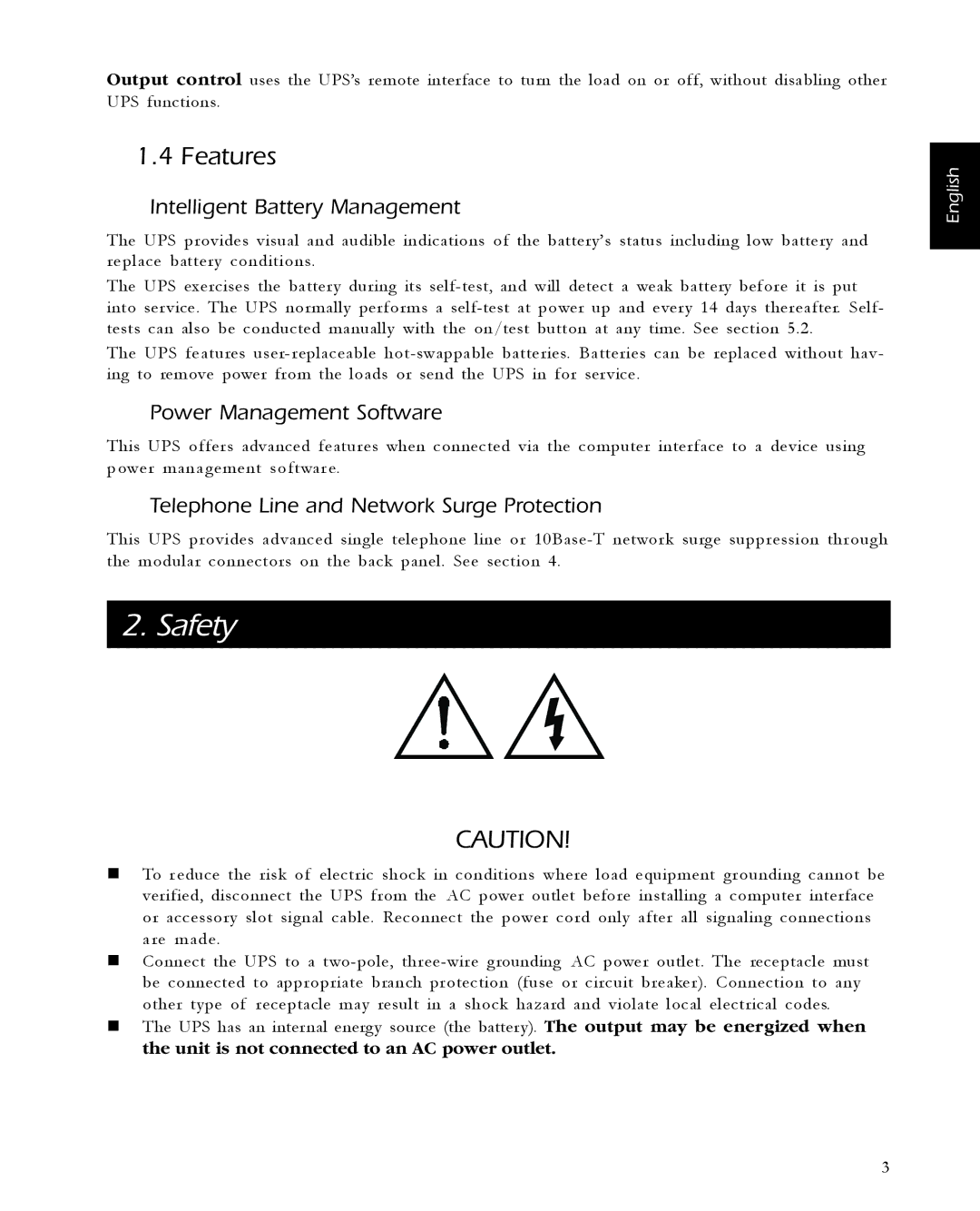
Output control uses the UPS’s remote interface to turn the load on or off, without disabling other UPS functions.
1.4 Features
Intelligent Battery Management
The UPS provides visual and audible indications of the battery’s status including low battery and replace battery conditions.
The UPS exercises the battery during its
The UPS features
Power Management Software
This UPS offers advanced features when connected via the computer interface to a device using power management software.
Telephone Line and Network Surge Protection
This UPS provides advanced single telephone line or
2. Safety
CAUTION!
nTo reduce the risk of electric shock in conditions where load equipment grounding cannot be verified, disconnect the UPS from the AC power outlet before installing a computer interface or accessory slot signal cable. Reconnect the power cord only after all signaling connections are made.
nConnect the UPS to a
nThe UPS has an internal energy source (the battery). The output may be energized when the unit is not connected to an AC power outlet.
English
3
